
Ogre Battle: The March of the Black Queen is a 1993 real-time tactical role-playing game developed by Quest Corporation. Originally published for Super NES by Quest in Japan and by Enix America in North America. It is the first installment of the Ogre Battle series. It was directed by Yasumi Matsuno, and designed by Matsuno with Akihiko Yoshida. The story of Ogre Battle focuses on a band of rebels as they lead a revolution against a corrupt reigning Empire, ruled by an evil Empress.

Robotrek, known in Japan as Slapstick, is a role-playing video game (RPG) for the Super Nintendo Entertainment System (SNES). It was developed by Quintet and published by Enix in both Japan and North America in 1994. Set on the fictional planet Quintenix, the game puts the player in control of a budding robotics expert who is the son of a famous inventor.

Final Fantasy Legend II, known in Japan as SaGa 2: Hihou Densetsu, is a role-playing video game developed and published by Square for the Game Boy. The second entry in the SaGa series, it was released in 1990 in Japan, and in 1991 in North America. A remake for the Nintendo DS was released in 2009 by Square Enix, remaining exclusive to Japan. The Game Boy version was later ported to the Nintendo Switch and released worldwide by Square Enix in 2020, with later ports to Android, iOS and Microsoft Windows in 2021.

Final Fantasy Crystal Chronicles: Ring of Fates is an action role-playing game for the Nintendo DS, developed and published by Square Enix. It is a prequel to Final Fantasy Crystal Chronicles for the GameCube. The game takes advantage of both the local wireless and Wi-Fi capabilities of the system and features voice acting.
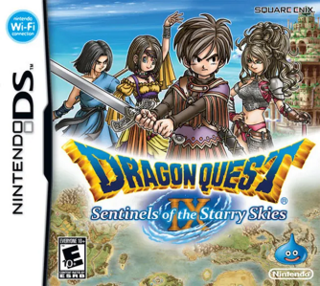
Dragon Quest IX: Sentinels of the Starry Skies is a role-playing video game co-developed by Level-5 and Square Enix for the Nintendo DS. Published by Square Enix in Japan in 2009, and by Nintendo overseas in 2010, it is the ninth mainline entry in the Dragon Quest series. The storyline follows the protagonist, a member of the angelic Celestrian race, after a disaster in their home scatters magical fruits across the mortal realm. While carrying over traditional gameplay from the rest of the series with turn-based battles, the game is the first Dragon Quest entry to feature a customizable player character, and the first to include a multiplayer mode, with the option of trading treasure maps and loaning player characters through Nintendo Wi-Fi. Online functions ended in 2014 when it ceased operations.

The World Ends with You is an action role-playing game co-developed by Square Enix and Jupiter for the Nintendo DS. Set in the modern-day Shibuya shopping district of Tokyo, The World Ends with You features a distinctive art style and urban fantasy elements inspired by Shibuya and its youth culture. Development was inspired by elements of Jupiter's previous handheld game, Kingdom Hearts: Chain of Memories. It was released in Japan in July 2007, and in PAL regions and North America in April 2008. Later, an enhanced port by h.a.n.d. for mobile devices was released in 2012 under the title The World Ends with You: Solo Remix, while another enhanced port for the Nintendo Switch was released worldwide in 2018 under the title The World Ends with You: Final Remix.

Dragon Quest X: Awakening of the Five Walkers Online, also known as Dragon Quest X Online, is a massively multiplayer online role-playing game (MMORPG) developed and published by Square Enix. It is the tenth mainline entry in the Dragon Quest series. It was originally released for the Wii in 2012, and was later ported to the Wii U, Windows, PlayStation 4, Nintendo Switch, Android, iOS, and Nintendo 3DS, all of which support cross-platform play. Other than a discontinued Windows version in Chinese, the game was not localized outside of Japan.

Bravely Default, known in Japan as Bravely Default: Flying Fairy, is a role-playing video game developed by Silicon Studio for the Nintendo 3DS handheld console. Bravely Default was originally released in 2012 and later rereleased as an expanded edition in 2013 subtitled For the Sequel in Japan. For the Sequel was later released in Europe, Australia, and North America in 2014 simply titled as Bravely Default. This expanded edition used the subtitle Where The Fairy Flies in territories outside of Japan. Square Enix published the game in Japan, while Nintendo handled publishing duties overseas. The gameplay uses a turn-based battle system and job system, in addition to incorporating options to combine job abilities and adjust battle speed and random encounter rates.

Bravely Second: End Layer is a role-playing video game developed by Silicon Studio for the Nintendo 3DS handheld console and is the direct sequel to Bravely Default. It was published by Square Enix in Japan on April 23, 2015, and by Nintendo in North America, Europe, and Australia in 2016.

Octopath Traveler is a role-playing video game developed by Square Enix, in collaboration with Acquire. The game was released for the Nintendo Switch in July 2018, for Windows in June 2019, for Stadia in April 2020, and for Xbox One in March 2021. It received generally favorable reviews, with praise for its presentation, music, and battle system, while its story received more mixed responses. The game had sold over 3 million copies worldwide by September 2022.
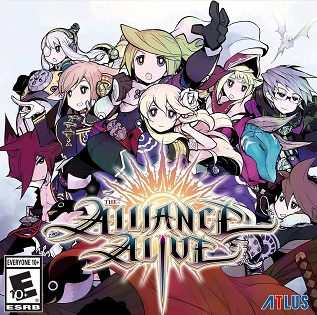
The Alliance Alive is a role-playing video game developed by Cattle Call for the Nintendo 3DS. The game was released in Japan by FuRyu in 2017, and was released worldwide by Atlus USA in 2018. The story follows a group of characters as they mount a rebellion against a race of Daemons that have ruled over humans since blotting out the sun a millennium before. Gameplay follows many traditions of the Japanese role-playing genre, including turn-based battles and navigation using a world map.
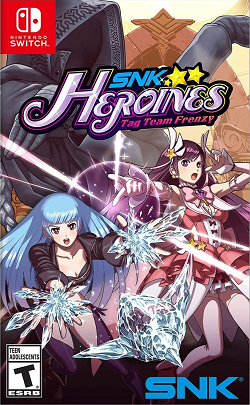
SNK Heroines: Tag Team Frenzy is a fighting game developed for PS4 by SNK and for Nintendo Switch and PC by Abstraction Games. The game was released for the Nintendo Switch and PlayStation 4 in September 2018 and was published in Japan and Asia by SNK and SEGA and in International version by NIS America. An arcade version was released the following October and the Microsoft Windows version arrived in February 2019. It is a spiritual successor to SNK Gals' Fighters and features a 2v2 tag-team gameplay system, which was also used in Kizuna Encounter: Super Tag Battle.

Trials of Mana is a 2020 action role-playing game developed by Xeen and published by Square Enix for Nintendo Switch, PlayStation 4 and Windows. A mobile port released the following year. It is a 3D remake of the 1995 Super Famicom title of the same name, the third game in the Mana series. The story follows six possible protagonists in their respective quests, which lead them to obtain the Mana Sword and fight a world-ending threat. In gameplay, the player controls three out of six characters, navigating field environments, fighting enemies in real-time combat, and making use of character classes. New to the gameplay and storyline is a post-game chapter with an unlockable class.

Bravely Default II is a role-playing video game developed by Claytechworks and published by Square Enix. It was released worldwide for the Nintendo Switch on February 26, 2021, with Nintendo publishing the game on the platform outside of Japan, and was released for Windows on September 2, 2021. It is the third main installment in the Bravely series, following the original Bravely Default and its direct sequel Bravely Second: End Layer. It features a separate story, setting, and cast of characters.

Omori is a 2020 role-playing video game developed and published by indie studio Omocat. The player controls a hikikomori teenage boy named Sunny and his dream world alter-ego Omori. The player explores both the real world and Sunny's surreal dream world as Omori, either overcoming or suppressing his fears and forgotten secrets. How Sunny and Omori interact depends on choices made by the player, resulting in one of several endings. The game's turn-based battle system includes unconventional status effects based on characters' emotions. Prominently portraying concepts such as anxiety, depression, psychological trauma, and suicide, the game features strong psychological horror elements.
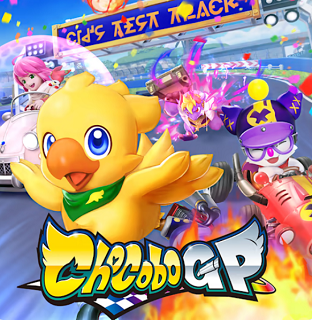
Chocobo GP is a 2022 kart racing game developed by Arika and published by Square Enix for the Nintendo Switch. The game is a spin-off of the Final Fantasy series and is a sequel to 1999's Chocobo Racing. It was released in celebration of the series' 35th anniversary and features locales and characters from across the franchise.
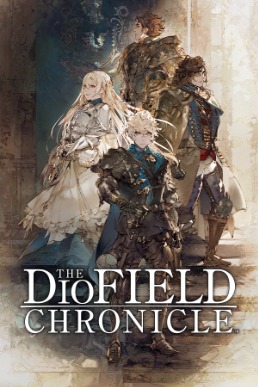
The Diofield Chronicle is a strategy role-playing video game co-developed by Square Enix and Lancarse. It was released in September 2022 for the Nintendo Switch, PlayStation 4, PlayStation 5, Xbox One, Xbox Series X/S, and Windows platforms.
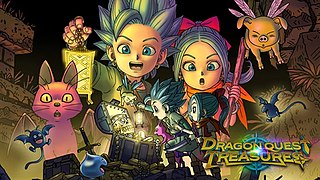
Dragon Quest Treasures is a 2022 action role-playing game developed by Tose and published by Square Enix. A spin-off of the Dragon Quest series, the game takes place on the floating continent of Draconia and follows the siblings Erik and Mia from Dragon Quest XI in search of seven legendary Dragonstones. Dragon Quest Treasures was released for the Nintendo Switch in December 2022 and Windows in July 2023. It received mixed to positive reception from critics.

Harvestella is a 2022 farm life sim role-playing video game developed by Live Wire and published by Square Enix. It was released for the Nintendo Switch and Windows on November 4. It has been compared to Final Fantasy and Rune Factory, and revolves around farming crops while attempting to save the world from the sudden appearance of a deadly magical plague known as Quietus.

Dungeon Encounters is a 2021 role-playing video game developed by Square Enix and Cattle Call and published by Square Enix. It was released for Nintendo Switch, PlayStation 4, and Windows. Dungeon Encounters was the first game Hiroyuki Ito had directed in 14 years and has received positive reviews from critics for its gameplay.




















